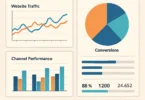The retail industry is undergoing a massive transformation, and one of the most intriguing trends in recent years is retailers entering the fuel business. Traditionally, gas stations and convenience stores have dominated the fuel market, but now big-box retailers like Walmart, Costco, Target, and Dollar General are reshaping this space. This trend is not merely a diversification strategy but a comprehensive effort to integrate fuel services with retail shopping, offering customers more value, convenience, and competitive pricing.
Consumers are responding positively to this shift because it solves multiple pain points—lower fuel costs, loyalty rewards, and one-stop shopping convenience. For example, instead of stopping at a gas station and then heading to a grocery store, consumers can do both at one location, often at a discounted price.
In this comprehensive guide, we’ll explore why retailers are investing in fuel businesses, examine gas station partnerships, understand petroleum market dynamics, and analyze the impact of electric vehicles (EVs) on this trend. We’ll also share real-world case studies, consumer benefits, and future predictions to help you understand why this change is such a big deal.
The Motivations Behind Retailers’ Interest
Expanding Revenue Streams
Retailers are continuously looking for ways to diversify revenue streams and create additional points of customer engagement. The fuel business presents a reliable opportunity because of its steady demand. Despite the growing popularity of EVs, gasoline consumption remains strong in the U.S., with over 90% of vehicles still relying on fossil fuels.
By integrating fuel services into their offerings, retailers can:
Generate extra revenue from fuel sales.
Cross-sell products within their stores.
Increase foot traffic, which leads to higher sales of non-fuel products.
For instance, Costco’s gas stations are often located adjacent to their warehouses, and their membership-based fuel discounts draw thousands of additional customers every day. This results in increased in-store purchases, creating a win-win for both the business and the consumer.
Leveraging Existing Customer Bases
Retailers like Walmart and Target already have millions of loyal customers. Adding fuel services allows them to tap into this pre-existing trust and create a more complete shopping experience.
Walmart+ Membership Fuel Discounts – Walmart offers fuel discounts as part of its membership program, encouraging customers to both shop and refuel at Walmart locations.
Sam’s Club Fuel Rewards – Members enjoy exclusive lower fuel prices, which makes the membership itself more valuable.
By leveraging existing customer bases, retailers can increase retention and loyalty. Consumers appreciate the added convenience of buying groceries, household items, and fuel in one stop.
Gas Station Partnerships: The New Normal
Types of Partnerships
Retailers entering the fuel business often do so through strategic partnerships. Managing a fuel station requires expertise in fuel logistics, regulatory compliance, and safety standards. Collaborating with established fuel companies helps retailers navigate these challenges.
Common partnership models include:
Co-branding with established fuel providers – For example, Walmart has worked with Murphy USA, a well-known fuel retailer.
Private-label fuel stations – Costco operates under its own fuel brand, giving it greater control over pricing and promotions.
Joint ventures or management contracts – Retailers may partner with fuel providers to share costs and risks.
Benefits and Challenges
Benefits:
Economies of scale – Retailers can buy fuel in bulk, reducing costs.
Enhanced loyalty programs – Consumers earn rewards on fuel and retail purchases.
Brand synergy – Partnering with a trusted fuel provider strengthens consumer confidence.
Challenges:
Fluctuating fuel prices – Sudden price spikes can reduce margins.
High operational costs – Maintaining a fuel station involves compliance, staffing, and safety measures.
Competition from traditional fuel retailers – Established gas station brands may retaliate with aggressive pricing.
Understanding Petroleum Market Dynamics
Current Trends in Fuel Demand
The U.S. fuel market is expected to remain strong throughout the 2020s, with millions of internal combustion vehicles still on the road. Convenience is a major driver, as consumers increasingly prefer locations that offer both fuel and retail options. Retailers entering the fuel business are capitalizing on this demand for multi-service locations.
Another trend is digital integration. Retailers like Costco and Walmart have apps that show real-time fuel prices, offer digital coupons, and let customers pre-pay for fuel, enhancing the user experience.
Impact of Electric Vehicles
The rise of EVs presents both challenges and opportunities. By 2030, EVs are projected to represent 20-25% of new car sales in the U.S. Retailers are already responding to this shift by:
Installing EV charging stations alongside fuel pumps.
Partnering with EV charging networks like Tesla Superchargers and Electrify America.
Exploring renewable energy solutions, positioning themselves as sustainable fuel providers.
Walmart recently announced plans to add EV chargers to hundreds of locations across the country, ensuring that both gasoline and electric vehicle owners remain loyal customers.
A List of Retailers Entering the Fuel Business
Major Players and Their Strategies
Several key retailers have either entered or expanded their fuel operations, including:
Walmart – Operates fuel stations via Murphy USA and its own branded outlets.
Costco – Known for membership-only fuel stations with lower prices.
Dollar General – Partnering with local fuel distributors to test the concept of adding fuel services.
Target – Exploring co-branded stations in high-traffic locations.
Kroger – Offers fuel points as part of its loyalty program.
Case Studies
Costco Fuel Strategy:
Costco’s fuel stations are one of its biggest membership drivers. According to industry data, up to 50% of members visit Costco primarily for discounted fuel, and this often leads to increased in-store spending.
Walmart + Murphy USA Partnership:
This partnership has allowed Walmart to rapidly scale its fuel presence while outsourcing the complexities of fuel management. Customers benefit from low-cost fuel, and Walmart gains from increased store visits.
Consumer Impact and Expectations
Enhanced Convenience and Accessibility
Retailers entering the fuel business create one-stop destinations where customers can:
Refuel vehicles.
Shop for groceries and household goods.
Enjoy loyalty rewards and digital promotions.
This time-saving convenience is particularly appealing to busy families and commuters.
Price Competitiveness
Big-box retailers can offer lower fuel prices because they operate on slimmer margins compared to traditional fuel stations. This pricing advantage often leads to increased loyalty, as customers return to save on both fuel and shopping.
Future Predictions for Fuel Retail
Increased EV Infrastructure – Expect retailers to invest more in charging stations alongside traditional pumps.
Data-Driven Fuel Promotions – Retailers will use customer data to personalize fuel discounts and upsell in-store products.
Sustainability Initiatives – Companies will explore biofuels and renewable energy to attract eco-conscious consumers.
Expansion of Partnerships – We may see tech companies and fuel retailers collaborating to offer AI-powered loyalty programs.
Conclusion
Retailers entering the fuel business are reshaping consumer expectations and disrupting the traditional fuel retail industry. By combining competitive pricing, loyalty programs, and convenient one-stop services, retailers like Walmart and Costco are changing how Americans buy fuel.
This trend isn’t just about selling gas—it’s about building a comprehensive customer experience that integrates retail, fuel, and future energy solutions like EV charging. As this shift accelerates, consumers will enjoy better prices, greater convenience, and more innovation in the years to come.






